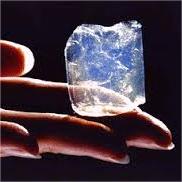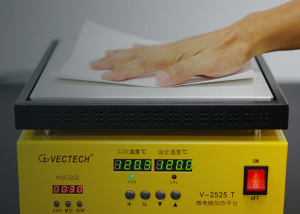Professional industry ceramic supplier, silicon nitride, silicon carbide, aluminum nitride and any other kinds of ceramics.
1. The Quiet Revolution in High-Temperature Material Processing
In the very affordable and innovation-driven realm of battery innovation, the synthesis of high-performance anode materials for sodium, lithium, and potassium-ion batteries stands as an awesome obstacle. At the heart of this detailed procedure exists a critical, yet typically neglected part: the crucible. This vessel needs to hold up against a genuine snake pit– temperatures soaring beyond 1000 ° C and the unrelenting, corrosive assault of liquified alkali changes. While traditional diamond crucibles have long been the default option, a groundbreaking standard shift is underway. Go into the innovative Silicon Carbide Crucible— a masterfully engineered option that is substantially redefining the benchmarks for resilience, performance, and pureness in hightemperature. This article meticulously explores the profound benefits of these cutting-edge crucibles, offering vital insights for makers pursuing excellence.

2. The Achilles’ Heel of Tradition: Limitations of Diamond Crucibles
For decades, diamond crucibles were the common workhorses of high-temperature applications. Their extensive refractoriness made them an apparently rational option. Nevertheless, in the caustic setting needed for battery product synthesis, their integral susceptibilities become glaringly obvious.
The key issue is their unhealthy vulnerability to deterioration by molten alkali hydroxides. At functional temperatures, these hostile media progressively infiltrate the microstructure of corundum, resulting in:
Product Degradation: The crucible wall thins and damages, creating disastrous failing and introducing aluminabased pollutants right into the high-purity anode product set.
Short Service Life: Regular substitutes are not just a trouble; they stand for significant downtime, increased operational costs, and compromised production consistency.
Inferior Thermal Conductivity: Compared to Silicon Carbide, diamond’s reduced thermal conductivity leads to irregular heat circulation. This can lead to local hot spots, irregular response kinetics, and eventually, nonuniform product residential properties in the end product.
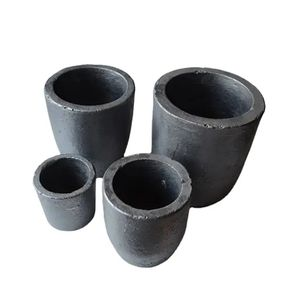
This combination of variables makes standard diamond crucibles a precarious and pricey selection for state-of-the-art battery product production.
3. The Silicon Carbide Crucible: A Synthesis of Material Science Genius
The development of innovative Silicon Carbide crucibles notes a quantum leap in material science. Silicon Carbide itself is an outstanding ceramic, flaunting a phenomenal combination of residential or commercial properties:
Phenomenal Thermal Conductivity: Promotes quick and uniform warm transfer, ensuring constant temperature profiles throughout the thaw and fostering uniform crystal development in the anode products.
Awesome Mechanical Stamina: Keeps architectural integrity under severe thermal and mechanical tension, withstanding deformation and fracturing.
High Intrinsic Melting Point: Far surpasses the functional demands of battery product synthesis.
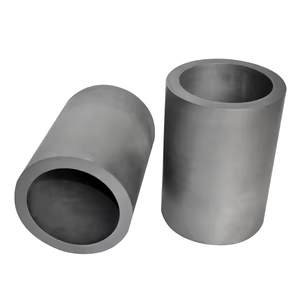
However, beautiful SiC also has a kryptonite: it is not entirely unsusceptible to long-term exposure to thaw alkalis. This is where simple SiC transforms into an engineered marvel.
4. The Pinnacle of Security: The InSitu RareEarth Modified Compound Oxide Layer
Truth differentiator of the next-generation Silicon Carbide Crucible is not simply the base material, but an ingeniously used, hermetically-sealing protective finishing. This is not a basic sprayed-on layer; it is an in situ, chemically bonded RareEarth Modified Compound Oxide Layer, used using an innovative solgel procedure adhered to by precisely managed heat treatment.
This nanoengineered guard is a tour de force in surface area scientific research. The incorporation of rare-earth elements like Yttrium and Lanthanum produces a synergistic fortification:
Yttrium promotes the formation of a remarkably thick, stable nanocrystalline phase, significantly boosting the layer’s innate security.
Lanthanum works as a tiny sentinel, effectively filling grain boundaries and “pinning” possible microcracks, thus apprehending their proliferation.

5. The Unbeatable Bond: The Secret of Unyielding Attachment
A protective covering is just as reliable as its bond to the substrate. Conventional splashed or physically vapor-deposited coverings typically fail catastrophically due to the fact that they rely on a weak mechanical bond, catching spallation under thermal cycling.
The sophisticated Silicon Carbide Crucible eliminates this failure mode via a proprietary preoxidation method. Prior to the protective layer being applied, the SiC body goes through a controlled thermal treatment in air, triggering its surface area to in situ create a thin, consistent silicon dioxide transition layer.
This SiO ₂ layer is the cornerstone of the entire structure. It develops a durable, chemical bridge– a covalent bond– in between the SiC base and the rare-earth modified oxide layer. This interface is not just stuck; it is molecularly incorporated. Scratch tests expose crucial adhesion loads exceeding 45N, signifying a bond that continues to be steadfast also under one of the most serious thermal shock conditions.
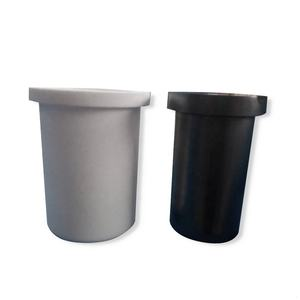
6. A Fortress Versus Thermal Shock: Resisting the Cycles of Fire and Quench
The synthesis of battery products is a cyclical process, involving rapid heating and cooling. These topics are the crucible of tremendous thermomechanical stress and anxiety, a key root cause of failure for lesser vessels.
The unique architecture of this Silicon Carbide Crucible presents upon it vast resistance to thermal shock. The combination of SiC’s natural high thermal conductivity and the resistant, chemically bonded user interface produces a structure that can withstand terrible quench cycles. Testing shows viability through 25+ cycles of transferring from a 1000 ° C heater directly into room-temperature water without delamination or breaking– a testimony to its outstanding resilience.
7. Relative Performance Information: An Irrefutable Testimony
The superiority of this technology is not simply academic; it is empirically verified. The table listed below contrasts the efficiency of the maximized Silicon Carbide Crucible with lacking variations and traditional corundum.
| Sample | Alkali Corrosion Resistance (Mass Loss Rate) | Coating Adhesion Strength (Critical Load Lc2) | Thermal Shock Stability (Cycles to Failure) |
| Advanced SiC Crucible | 0.48 mg/cm² | 45.2 N | 28 cycles |
| Uncoated SiC (Comparison) | 12.50 mg/cm² | / | / |
| Yttrium-Only Coating | 0.75 mg/cm² | 41.5 N | 22 cycles |
| No Rare-Earth Coating | 2.85 mg/cm² | 38.7 N | 24 cycles |
| No Pre-Oxidation Layer | 1.20 mg/cm² | 28.4 N | 12 cycles |
| Traditional Corundum | >>10 mg/cm² (Rapid Failure) | N/A | <5 cycles (Typical) |
The information is resoundingly clear: the synergistic combination of all sophisticated features is vital for achieving peak performance. Leaving out any kind of single component– be it the dual rare-earth modification or the important preoxidation action– causes a conspicuous and inappropriate destruction in performance.
8. A Critical Financial Investment for ForwardThinking Manufacturers
In the unrelenting quest for remarkable battery efficiency and manufacturing economics, the selection of processing equipment is not an insignificant matter– it is a calculated decision. The sophisticated, rare-earth changed Silicon Carbide Crucible is not an incremental renovation; it is a transformative modern technology.
By buying these crucibles, makers can anticipate:
Uncompromised Purity: Eliminate crucible-derived contamination for higher-grade anode products. Prolonged Operational Life-span: Significantly reduces substitute regularity and linked downtime.
Boosted Refine Consistency: Accomplish uniform home heating and premium response control.
Lower Total Price of Ownership: Lower long-term functional costs in spite of a greater preliminary investment.
Do not allow a subpar crucible to be the weakest link in your production chain. Raise your battery product synthesis to an echelon of unassailable top quality and effectiveness. Embrace the future of thermal handling; embrace the sophisticated Silicon Carbide Crucible.
Supplier
Tanki New Materials Co.Ltd. focus on the research and development, production and sales of ceramic products, serving the electronics, ceramics, chemical and other industries. Since its establishment in 2015, the company has been committed to providing customers with the best products and services, and has become a leader in the industry through continuous technological innovation and strict quality management.
Our products includes but not limited to Aerogel, Aluminum Nitride, Aluminum Oxide, Boron Carbide, Boron Nitride, Ceramic Crucible, Ceramic Fiber, Quartz Product, Refractory Material, Silicon Carbide, Silicon Nitride, ect. If you are interested in Silicon Carbide Crucibles, please feel free to contact us.
Tags:sic crucible,silicon carbide graphite crucible,silicon carbide crucible price



